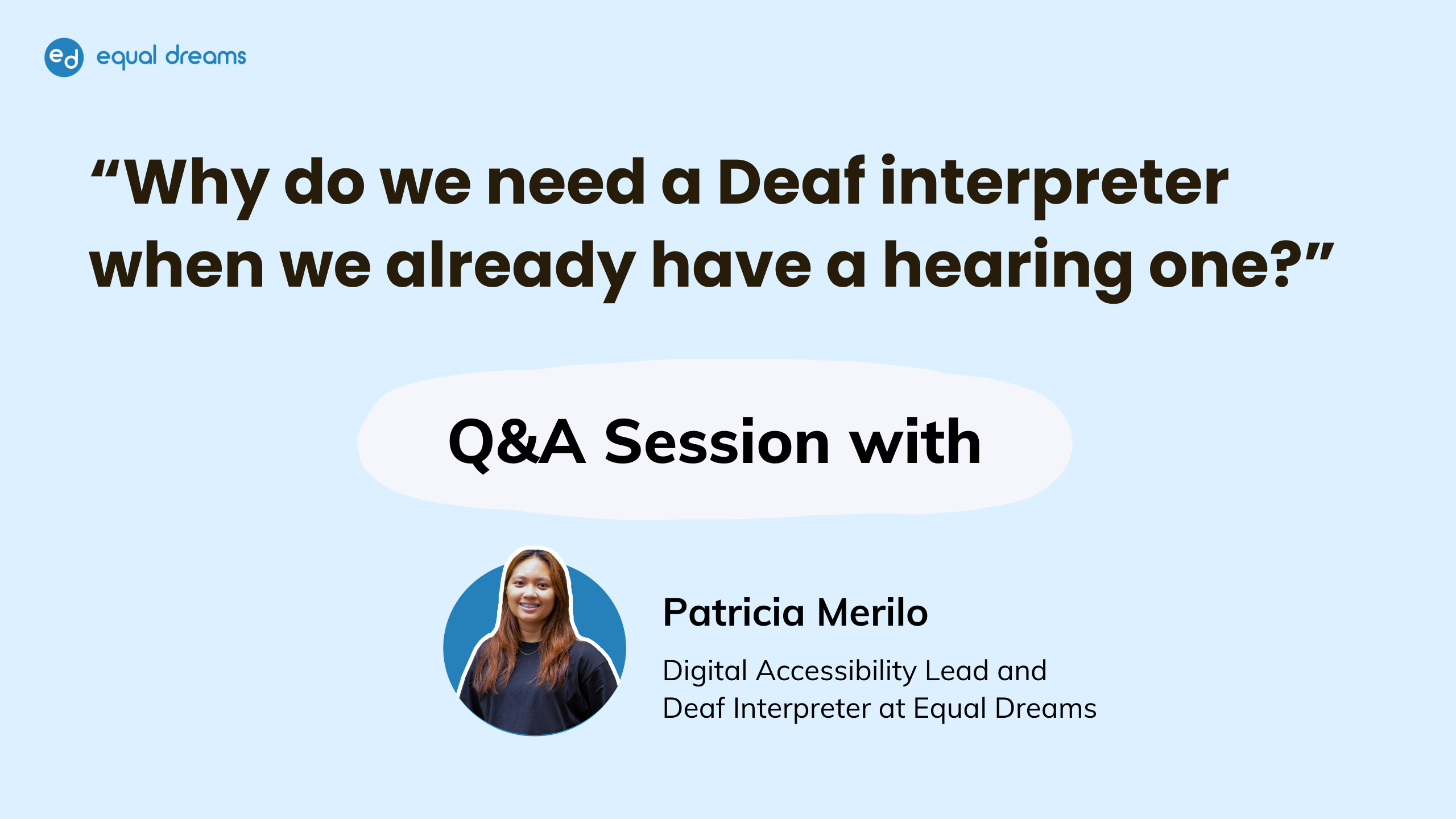
We had the pleasure of sitting down with Patricia, a Deaf Interpreter and our Digital Accessibility Lead, for an insightful Q&A session. She shared her experiences, challenges, and hopes for the future of Deaf interpreting, offering a valuable perspective on accessibility and representation.
Question 1: What do you find most rewarding about interpreting?
Patricia described Deaf interpreting as deeply fulfilling in many ways. She highlighted three key aspects that make the work especially rewarding:
- Empowering the Deaf community: As a Deaf Interpreter, Patricia ensures cultural accuracy and linguistic clarity by interpreting from a Deaf perspective. In creative spaces, she translates rhythm, tone, and artistic intent – capturing nuances that might otherwise be lost. She emphasized that her presence in the field validates that Deaf individuals can lead accessibility efforts, not just participate in them.
- Being a role model: Patricia noted that many young Deaf individuals have never seen Deaf Interpreters in action. By witnessing her work, they are inspired to take ownership of accessibility and advocate for their community.
- Making information truly accessible: Some of Patricia’s most rewarding moments come when she interprets complex content and a Deaf person responds with, “I finally get it now!” For her, these moments of genuine connection and clarity are powerful reminders of the impact of her work.
Question 2: What are common misconceptions people have about Deaf Interpreters?
Patricia pointed out that there are still widespread misconceptions about Deaf Interpreters (DIs) and how their work differs from that of Hearing Interpreters (HIs).
She explained that DIs bring native-level fluency, cultural insight, and the ability to bridge linguistic gaps that HI may struggle with. However, many companies, especially in creative industries, question the need for DIs when they already have hearing interpreters. Patricia stressed that interpreting is not just about translating words – it’s about conveying meaning, emotion, and cultural depth. In artistic settings like theatre, music, and dance, DIs offer a level of expressiveness that HI alone may not capture.
Another misconception Patricia addressed is the assumption that any Deaf person can be a DI simply because they are fluent in sign language. She clarified that interpreting is a profession that requires specialized training, linguistic expertise, and a strong ethical foundation – skills that not all fluent signers possess.
Question 3: What would you like more people to understand about your role?
Patricia expressed a desire for greater awareness and recognition of the vital role Deaf Interpreters play. She shared several ways this could be achieved:
- Increased representation: She hopes to see more DIs in mainstream media, performances, conferences, and public events.
- Education and advocacy: Patricia believes in educating Deaf individuals on the benefits of working with DIs and empowering them to request DI services when needed.
- Inclusion in artistic and cultural events: She emphasized the importance of hiring DIs for performances to ensure authentic linguistic and cultural representation.
- Greater use in broadcast and online media: Patricia also advocated for more DIs in pre-recorded shows, TV broadcasts, and online content to improve accessibility for Deaf audiences.
Question 4: How do you see the future of Deaf interpreting in Singapore?
While optimistic, Patricia acknowledged that the future of Deaf interpreting in Singapore still faces significant challenges.
She noted that cost is a major barrier, as many organizations perceive DIs as more expensive than HIs. This creates resistance to hiring DIs, despite the need for culturally appropriate interpretation. Patricia stressed the importance of DIs being more vocal about their right to accessible and accurate representation.
Another challenge she identified is the lack of a formal certification pathway for DIs in Singapore. She believes that establishing professional training programs and ethical standards would help grow the field and encourage more Deaf individuals to consider interpreting as a career.
Patricia also shared her hope for greater inclusion in the arts scene, which is slowly beginning to recognize the value of Deaf-led interpretation. She envisions a future where DIs are more visible in theatre, music, and film, enriching creative experiences with their cultural and linguistic expertise.
Beyond creative spaces, Patricia emphasized the need for DIs in high-stakes settings such as legal, medical, educational, and government events. She believes that with increased recognition and training, Deaf interpreters will play a larger role in ensuring equal access across all sectors.



